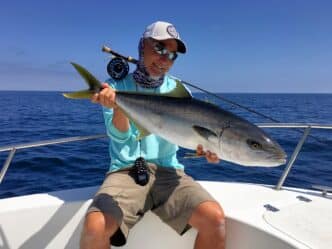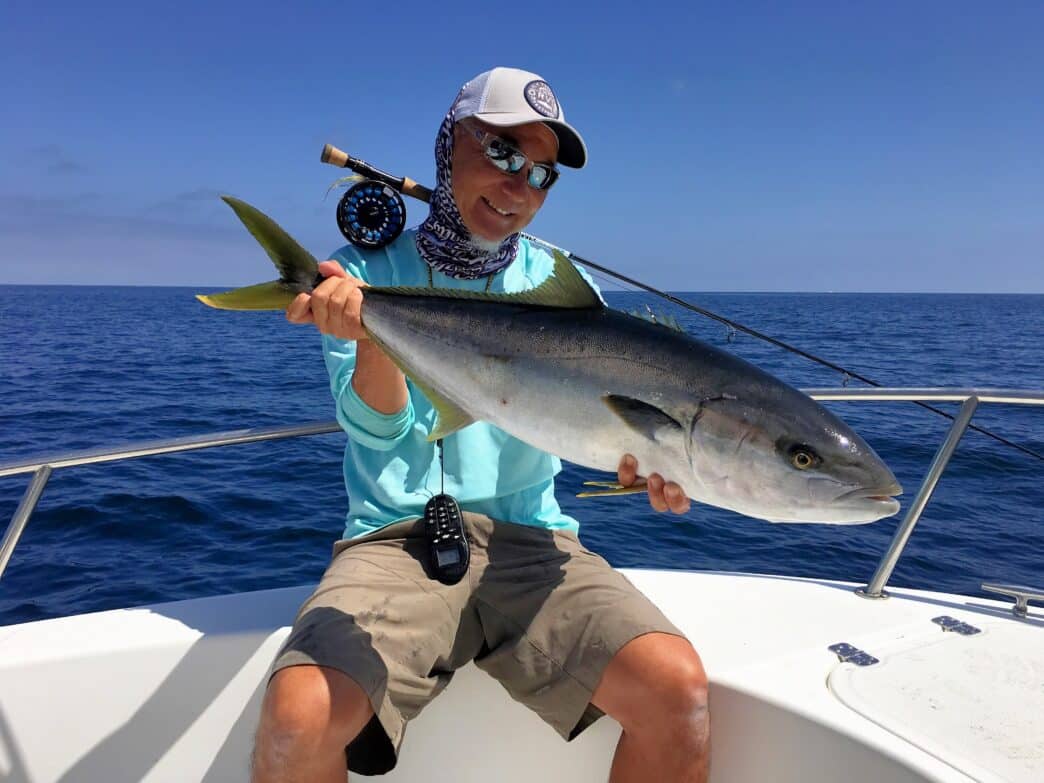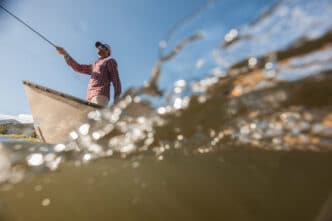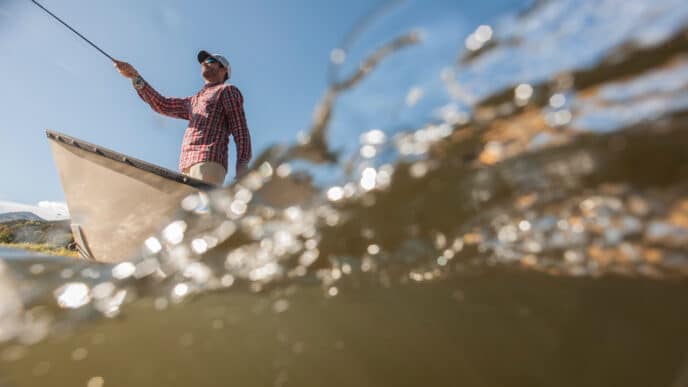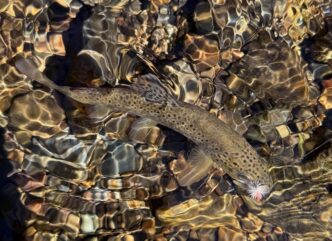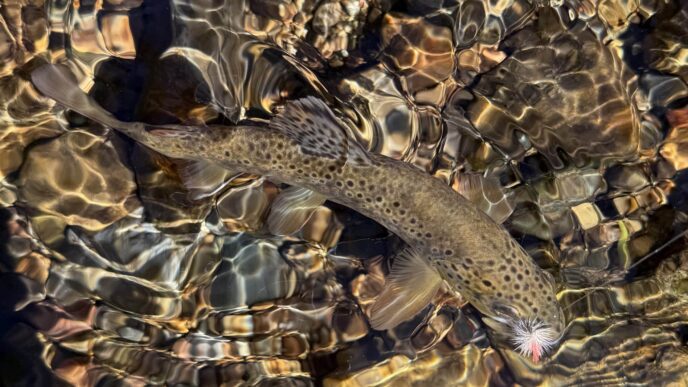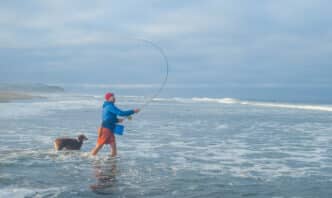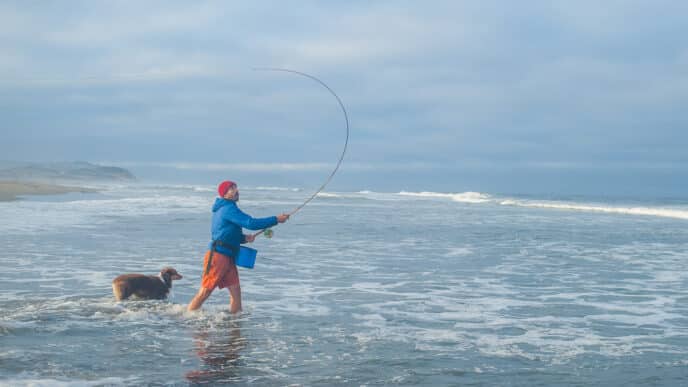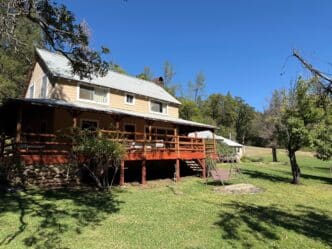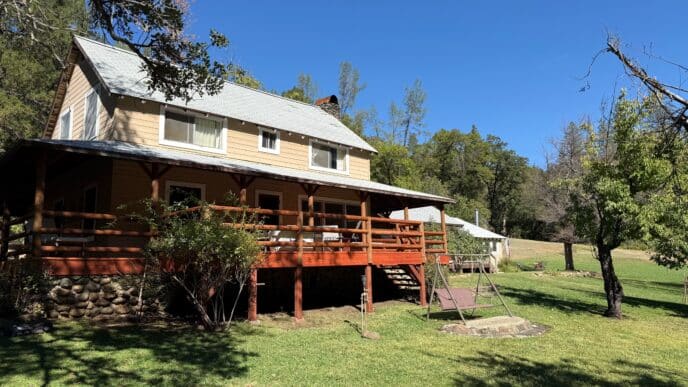EXPLORING THE REGION’S SALTWATER FISHING OPPORTUNITIES—PART IV
Fall Migration
During certain “warm water” years, we are blessed with migrating schools of California yellowtail (Seriola dorsalis), yellowfin tuna (Thunnus albacares), skipjack tuna (Katsuwonus pelamis), and dorado (Coryphaena hippurus) as they march up the line from southern waters. This can be a wonderful time to pursue them with the fly as they collect under kelps on underwater banks, near offshore islands, and along temperature and current breaks. Given their immense strength, yellowfin tuna on the fly may be among the most difficult to land once hooked.
Even school-sized yellowfin tuna can put up an amazing fight! That 10-weight outfit will be more than adequate for smaller kelp paddy yellowtail, skipjack, and dorado, but I recommend going heavier if tuna is your primary target. Not the best casting tool, a fast-action 12-weight Helios has the casting ability and lifting power to help cut off those circles and move fish, while the accompanying Galvan Grip 12 has the line capacity required to endure those long runs. For pelagics, I prefer a minimum of 300 yards of 50-pound spectra backing with a small Bimini Twist, then doubled with a Surgeon’s Knot, as that will distribute the loop-to-loop load while minimizing damage to the fly line’s end loop.
Scientific Angler’s Sonar 3D Custom Tip remains my line of choice, as it can be trimmed as needed to meet your style of casting. To help with fly turnover, I construct a simple leader starting with a 4-foot section of 40-pound fluorocarbon connected with a triple Surgeon’s Knot to a 4-foot section of 30-pound fluorocarbon leader. That’s usually enough abrasion resistance for both dorado and tuna teeth, yet stealthy enough to entice a bite.
When it comes to flies, I prefer the same patterns; Jonny King’s Kinky Muddler, Enrico Puglisi Minnows, and Lefty’s Deceivers in blue/white, olive/white, and tan/white, but upsized to primarily larger 4- 6-inch sizes. If paddy hunting and dorado are around, they will likely occupy the upper portion of the water column, with yellowtail below and tuna deepest, and often well away from the kelp. If you find breaking fish, determine their direction while motoring well ahead and upwind and let them come to you. Depending on the speed of drift, you may need to make a maximum downwind cast and dump line in order to achieve the desired depth. Use a two-handed strip and move that fly FAST. If you fish wahoo with the iron, you know you can’t retrieve fast enough!
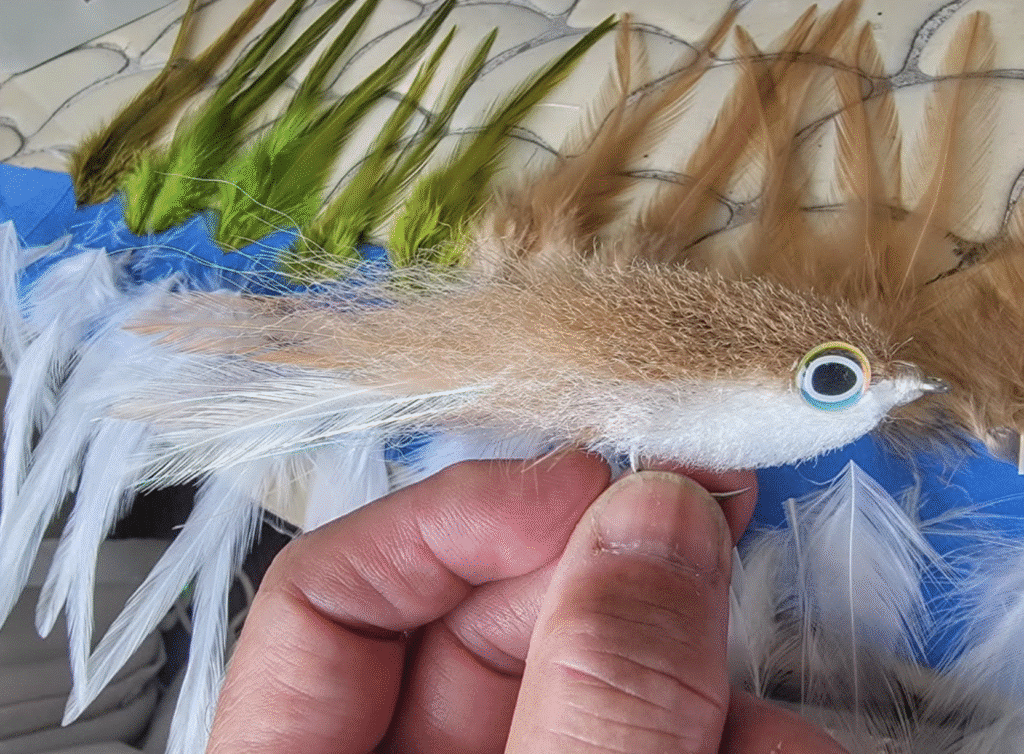
Hooking is only half of the battle when it comes to pelagic species. Remembering that the upper half of the rod is for casting, avoid “high sticking” as that will apply virtually no pressure on your quarry. Instead, use a low rod angle, placing the bend into the lower, heavier part of the rod. Once the fish settles in and begins circling below, apply maximum rod pressure at the top of the circle as the fish is coming towards the boat. Using a “short stroke” technique, only lift the rod a distance that matches the amount of line you can gather reeling. Doing so, in rhythm, can help lift the fish and keep it moving in your direction. Once close and leadered or on the gaff, always be prepared for a sudden burst and final run.
Read Glenn’s earlier installments of Southern California seasonal updates:
Winter: Bonito
Spring: Calico Bass
Summer: Corbina
We are extremely fortunate to have so many fly fishing opportunities in Southern California while being served by some of the industry’s finest fly shops. Please patronize Fishermen’s Spot in Van Nuys and Orvis in Pasadena. I have personally worked with them and can attest that they are all very knowledgeable, friendly, and capable of serving your exacting fly fishing needs, from fly fishing gear to local charter trips to fly tying lessons.
Glenn Ueda is a licensed California fly fishing guide who specializes in sightfishing for California Corbina. He can be reached at (951) 203-1405, glenn_ueda@yahoo.com or via Instagram @glenn_ueda.



